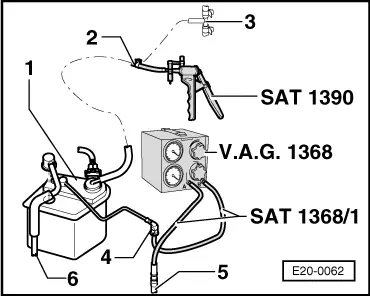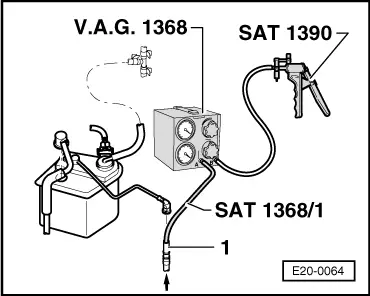| –
| Pull breather pipe -2- off activated charcoal filter canister -1- at T-piece -3-. |
| –
| Connect hand vacuum pump -SAT 1390- to pipe -2-. |
| –
| Pull breather pipe -5- to activated charcoal filter canister off fuel tank and connect to vacuum tester -V.A.G 1368- -connection A-. Use adapter -SAT 1368/1-. |
| –
| Connect vacuum tester -V.A.G 1368- -connection B- to breather pipe -4- to activated charcoal filter canister. Use adapter -SAT 1368/1-. |
| –
| Set vacuum tester to position -B-. |
| –
| Operate hand vacuum pump -SAT 1390- several times. A vacuum must not build up. |
| –
| Check breather connection -6- on activated charcoal filter canister -1- for soiling, clean if necessary. |
| If vacuum does not build up: |
| –
| Remove fuel filler cap. |
|
|

|


 Note!
Note!


 Note!
Note!